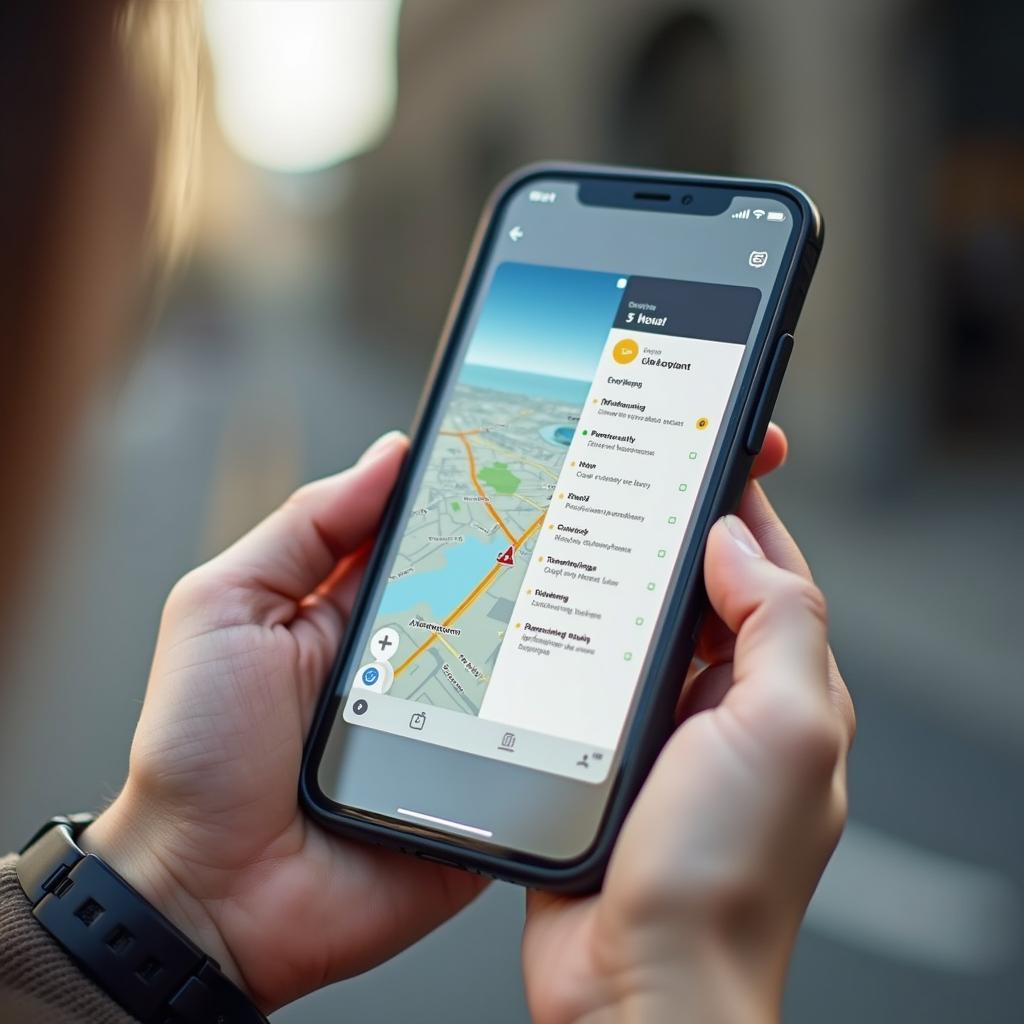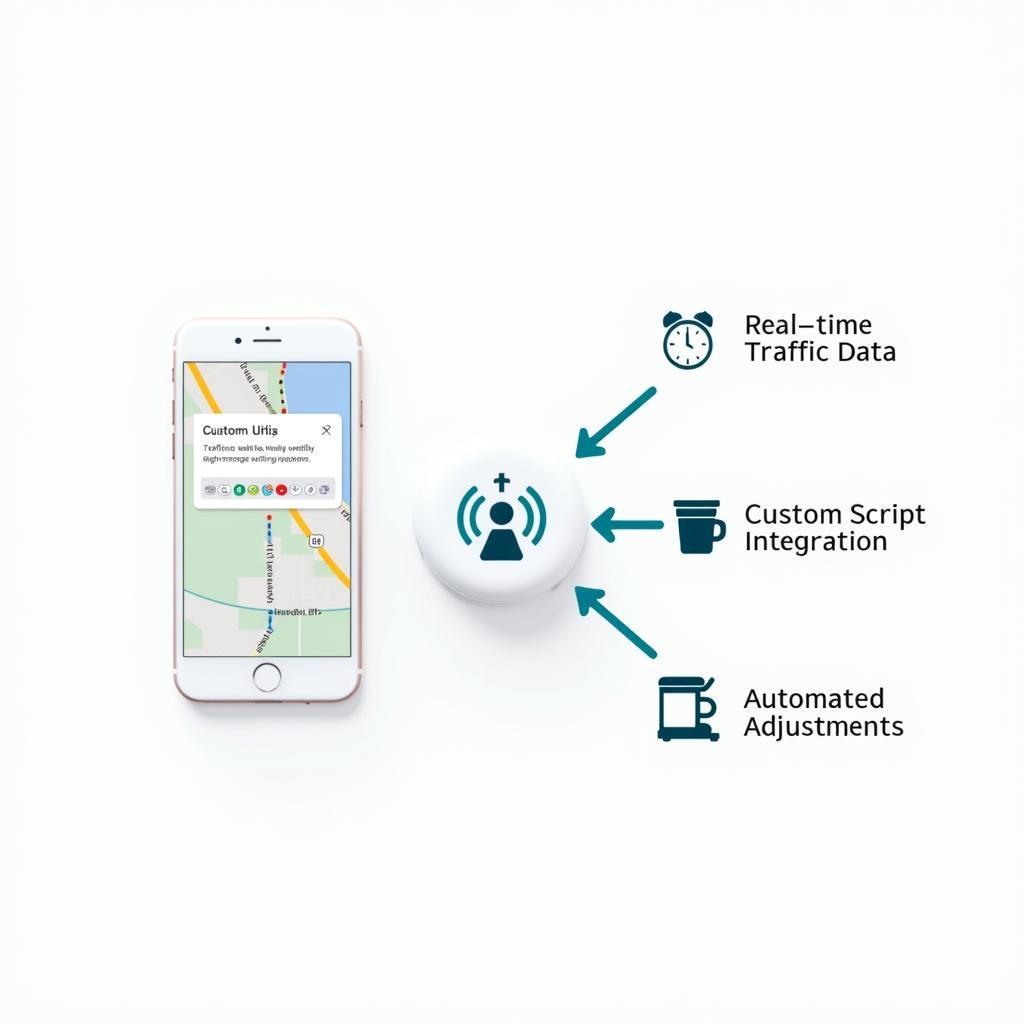The IELTS Speaking test often includes topics related to technology and problem-solving. One such topic that has appeared in recent exams and is likely to continue being relevant is “Describe a time when you used technology to solve a problem creatively.” This article will provide you with strategies and sample answers to help you excel in this speaking task.
Nội dung bài viết
- Part 1: Introduction and Interview
- Q: How often do you use technology to solve problems in your daily life?
- Q: Do you think people are becoming too dependent on technology for problem-solving?
- Part 2: Long Turn (Cue Card)
- Sample Answer (Band 8-9):
- Follow-up Questions:
- Part 3: Two-way Discussion
- Q: How has technology changed the way we approach problem-solving in recent years?
- Q: Do you think future generations will be more or less creative in solving problems due to advanced technology?
- Key Vocabulary and Phrases for High Scores
- Examiner’s Advice
Part 1: Introduction and Interview
In this section, the examiner may ask you general questions about technology and problem-solving. Here are some possible questions and sample answers:
Q: How often do you use technology to solve problems in your daily life?
Band 6-7 Answer:
I use technology quite often to solve problems. For example, I use my smartphone to check maps when I’m lost or to look up information when I need quick answers.
Band 8-9 Answer:
I’d say I rely heavily on technology for problem-solving in my day-to-day life. Whether it’s utilizing navigation apps to circumvent traffic jams, or employing productivity tools to streamline my work processes, technology has become an indispensable asset in tackling various challenges efficiently.
 Person using smartphone apps for daily problem-solving, showcasing reliance on technology for navigation and productivity.
Person using smartphone apps for daily problem-solving, showcasing reliance on technology for navigation and productivity.
Q: Do you think people are becoming too dependent on technology for problem-solving?
Band 6-7 Answer:
Yes, I think some people are becoming too dependent on technology. They might struggle to solve simple problems without their devices, which can be a problem if technology fails.
Band 8-9 Answer:
While technology undoubtedly offers immense benefits, there’s a growing concern that over-reliance on it might be eroding our innate problem-solving abilities. It’s crucial to strike a balance, using technology as a tool to augment our cognitive capabilities rather than as a crutch that supplants critical thinking and creative problem-solving skills.
Part 2: Long Turn (Cue Card)
Here’s a sample cue card related to the topic:
Describe a time when you used technology to solve a problem creatively.
You should say:
- What the problem was
- What technology you used
- How you used it creatively
- And explain how effective your solution was
Sample Answer (Band 8-9):
The problem I encountered was related to my daily commute to work. I live in a bustling city where traffic congestion is a persistent issue, and I was consistently arriving late to my office despite leaving home early.
To address this challenge, I decided to leverage technology in an innovative way. I used a combination of a traffic monitoring app and a smart home device. The app provided real-time traffic updates, while the smart home device was programmed to interact with my alarm clock and coffee maker.
Here’s where the creative aspect came into play. I wrote a custom script that integrated these technologies. Every morning, the system would analyze traffic patterns based on historical data and current conditions. If it detected heavy traffic, it would automatically adjust my alarm to wake me up earlier and trigger the coffee maker to start brewing at the appropriate time.
 Creative tech solution integrating traffic app with smart home devices for automated commute management.
Creative tech solution integrating traffic app with smart home devices for automated commute management.
What made this solution particularly effective was its adaptive nature. On days with lighter traffic, it allowed me to sleep longer, optimizing my rest without compromising punctuality. This tech-driven approach not only solved my tardiness problem but also improved my overall quality of life. I found myself less stressed about the commute and more energized at work due to the personalized wake-up times.
Moreover, this experience sparked my interest in home automation and programming, leading me to explore more ways to use technology creatively in my daily life. It was a perfect example of how innovative thinking, combined with existing technologies, can yield solutions that go beyond the obvious and transform everyday challenges into opportunities for growth and efficiency.
Follow-up Questions:
- How did you come up with this idea?
- Did you face any challenges while implementing this solution?
- Have you applied similar creative tech solutions to other problems?
Part 3: Two-way Discussion
Q: How has technology changed the way we approach problem-solving in recent years?
Band 6-7 Answer:
Technology has made problem-solving faster and easier in many ways. We can now find information quickly online and use various apps and tools to help us. However, it also means some people might rely too much on technology instead of thinking for themselves.
Band 8-9 Answer:
Technology has fundamentally transformed our approach to problem-solving in recent years. It has democratized access to information, allowing us to tap into vast knowledge bases and crowdsource solutions globally. This has led to more collaborative and iterative problem-solving processes.
Moreover, technologies like artificial intelligence and big data analytics have enabled us to tackle complex issues that were previously insurmountable. We can now process enormous amounts of data to identify patterns and solutions that might not be apparent to the human eye.
 AI and big data analytics transforming complex problem-solving by processing vast information streams.
AI and big data analytics transforming complex problem-solving by processing vast information streams.
However, this technological revolution also presents new challenges. There’s a risk of over-reliance on digital tools, potentially atrophying our innate problem-solving skills. It’s crucial to strike a balance, using technology to augment our cognitive abilities rather than replace them entirely.
Furthermore, the rapid pace of technological change means we must constantly adapt our problem-solving strategies. This necessitates a lifelong learning approach, where individuals and organizations must continuously update their skills to leverage new technologies effectively.
Q: Do you think future generations will be more or less creative in solving problems due to advanced technology?
Band 6-7 Answer:
I think future generations might be more creative because they’ll have more tools and information to work with. However, there’s also a risk that they might become too dependent on technology and lose some problem-solving skills.
Band 8-9 Answer:
The impact of advanced technology on future generations’ creativity in problem-solving is likely to be multifaceted and nuanced. On one hand, access to sophisticated tools and vast information resources could catalyze unprecedented levels of creativity. These technologies can free up cognitive bandwidth for more abstract and innovative thinking, allowing future generations to focus on higher-order problem-solving.
Moreover, the interconnected nature of our world, facilitated by technology, promotes cross-pollination of ideas across diverse fields and cultures. This could lead to more interdisciplinary approaches to problem-solving, fostering creativity through the fusion of disparate concepts.
However, there are potential pitfalls. The ease of access to ready-made solutions might discourage original thinking. There’s a risk of falling into a “digital groupthink” where algorithms and AI-driven recommendations narrow our perspective, potentially stifling divergent thinking.
The key lies in how we integrate technology into education and problem-solving processes. If we focus on teaching critical thinking, adaptability, and the creative application of technology rather than mere consumption, future generations could harness these tools to achieve unprecedented levels of innovation. It’s about striking a balance between leveraging technological capabilities and nurturing innate human creativity.
Key Vocabulary and Phrases for High Scores
- Leverage /ˈlevərɪdʒ/ (verb): Use something to maximum advantage.
Example: We can leverage AI to solve complex environmental issues. - Innovative /ˈɪnəveɪtɪv/ (adjective): Featuring new methods; advanced and original.
Example: Her innovative approach combined traditional methods with cutting-edge technology. - Augment /ɔːɡˈment/ (verb): Make something greater by adding to it.
Example: These tools are designed to augment human intelligence, not replace it. - Atrophy /ˈætrəfi/ (verb): Gradually decline in effectiveness or vigor due to underuse or neglect.
Example: We must be careful not to let our problem-solving skills atrophy in the age of AI. - Catalyst /ˈkætəlɪst/ (noun): A person or thing that precipitates an event or change.
Example: The new software acted as a catalyst for improving team productivity.
Examiner’s Advice
To score high in the IELTS Speaking test, particularly when discussing technology and problem-solving:
- Use a variety of advanced vocabulary and idiomatic expressions relevant to technology and innovation.
- Provide specific examples to illustrate your points, drawing from personal experiences or well-known case studies.
- Demonstrate critical thinking by discussing both advantages and potential drawbacks of technological solutions.
- Practice speaking about various technologies and their applications to build fluency and confidence.
- Develop your ideas fully, providing reasons and examples to support your opinions.
Remember, the key to success in the IELTS Speaking test is not just about what you say, but how you say it. Aim for clarity, fluency, and depth in your responses.
For more tips on excelling in the IELTS Speaking test, check out our guide on how to describe a time you were involved in a creative project.


